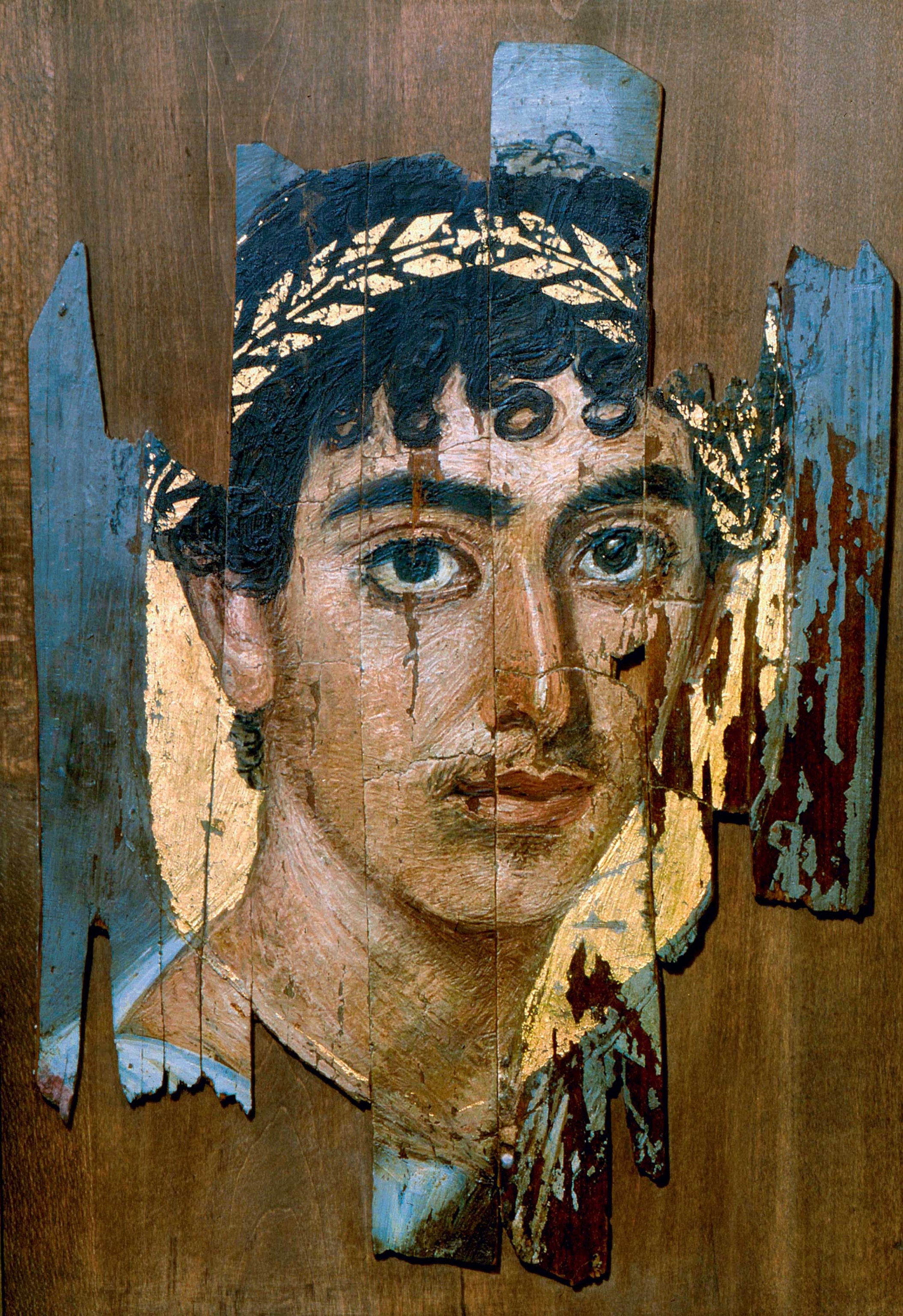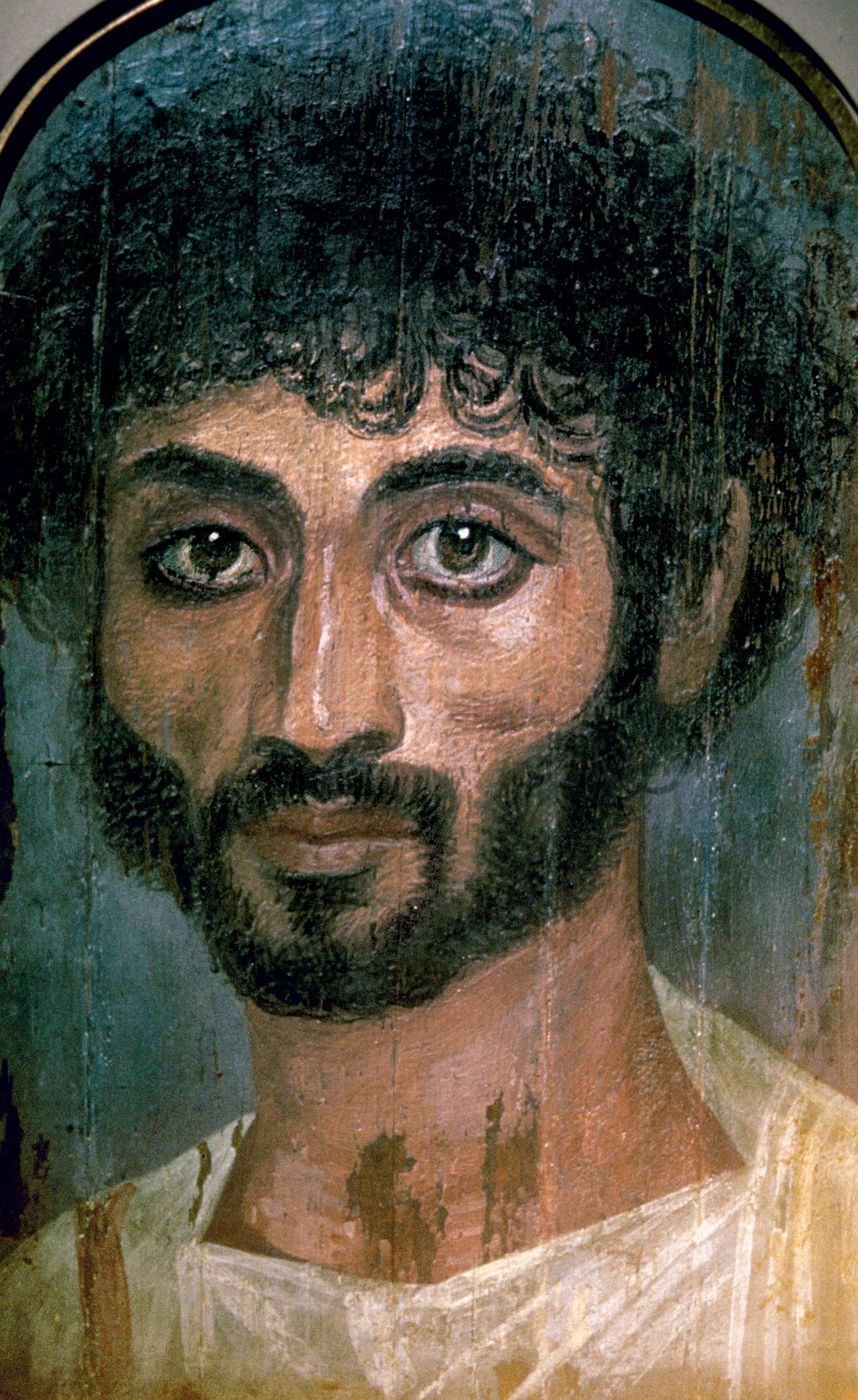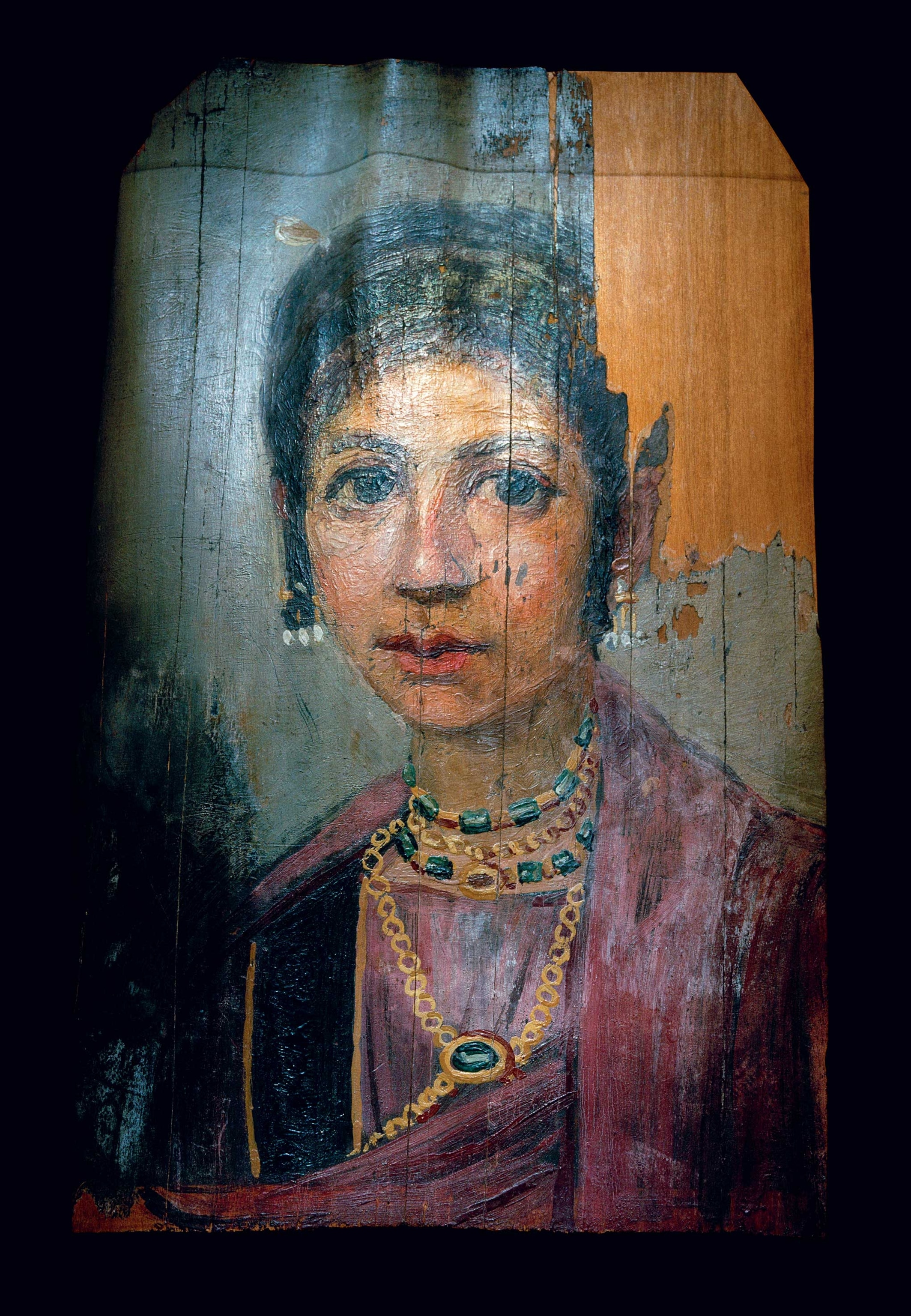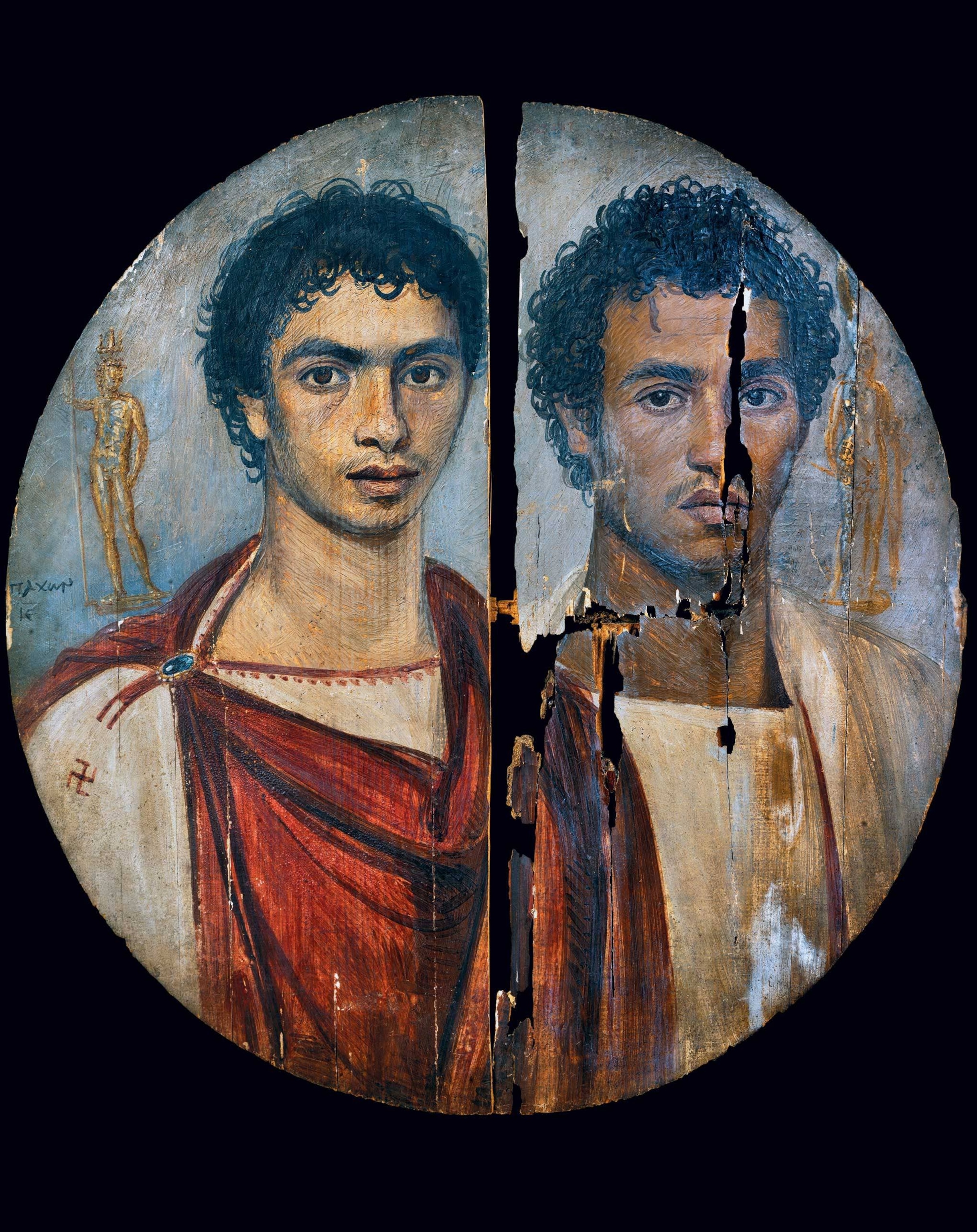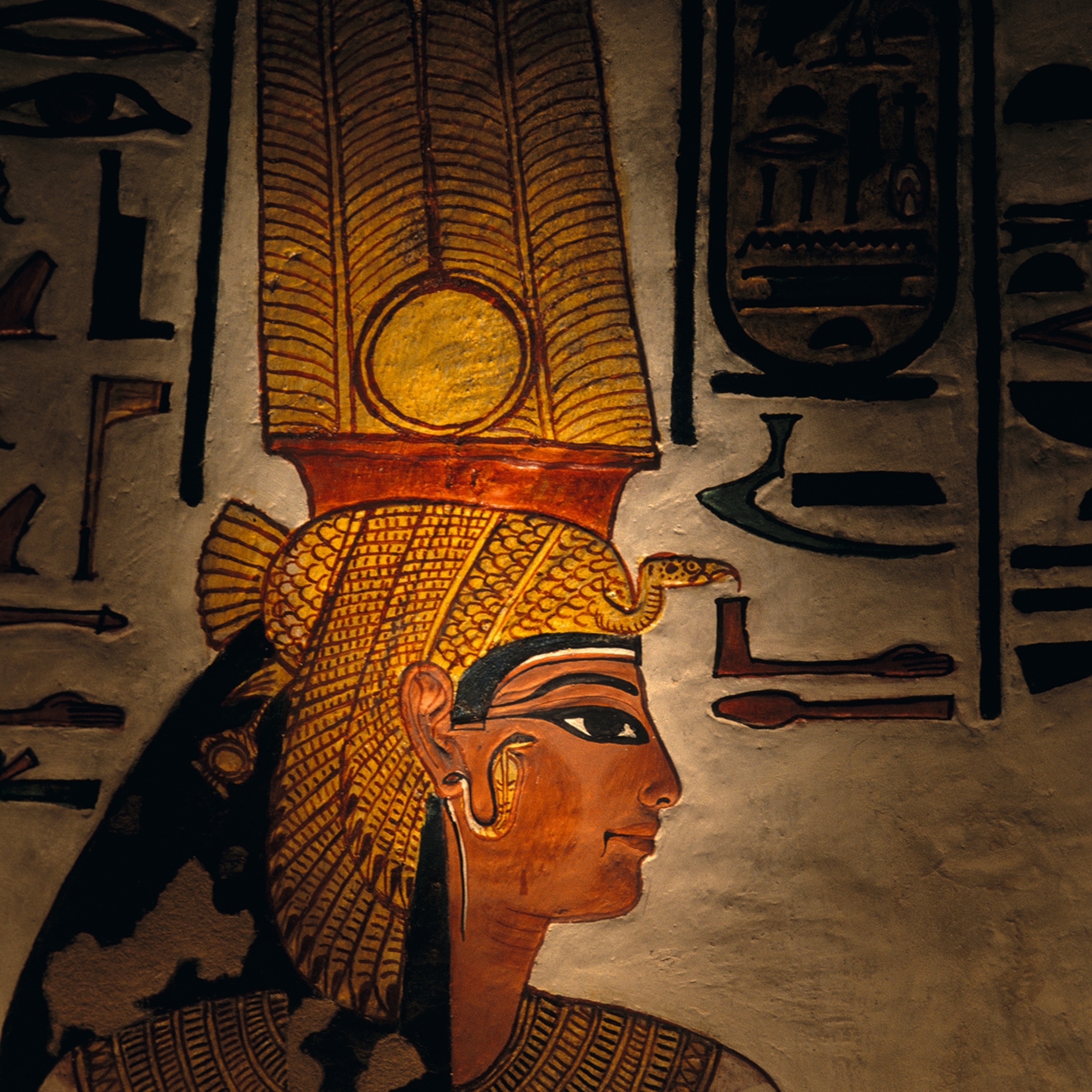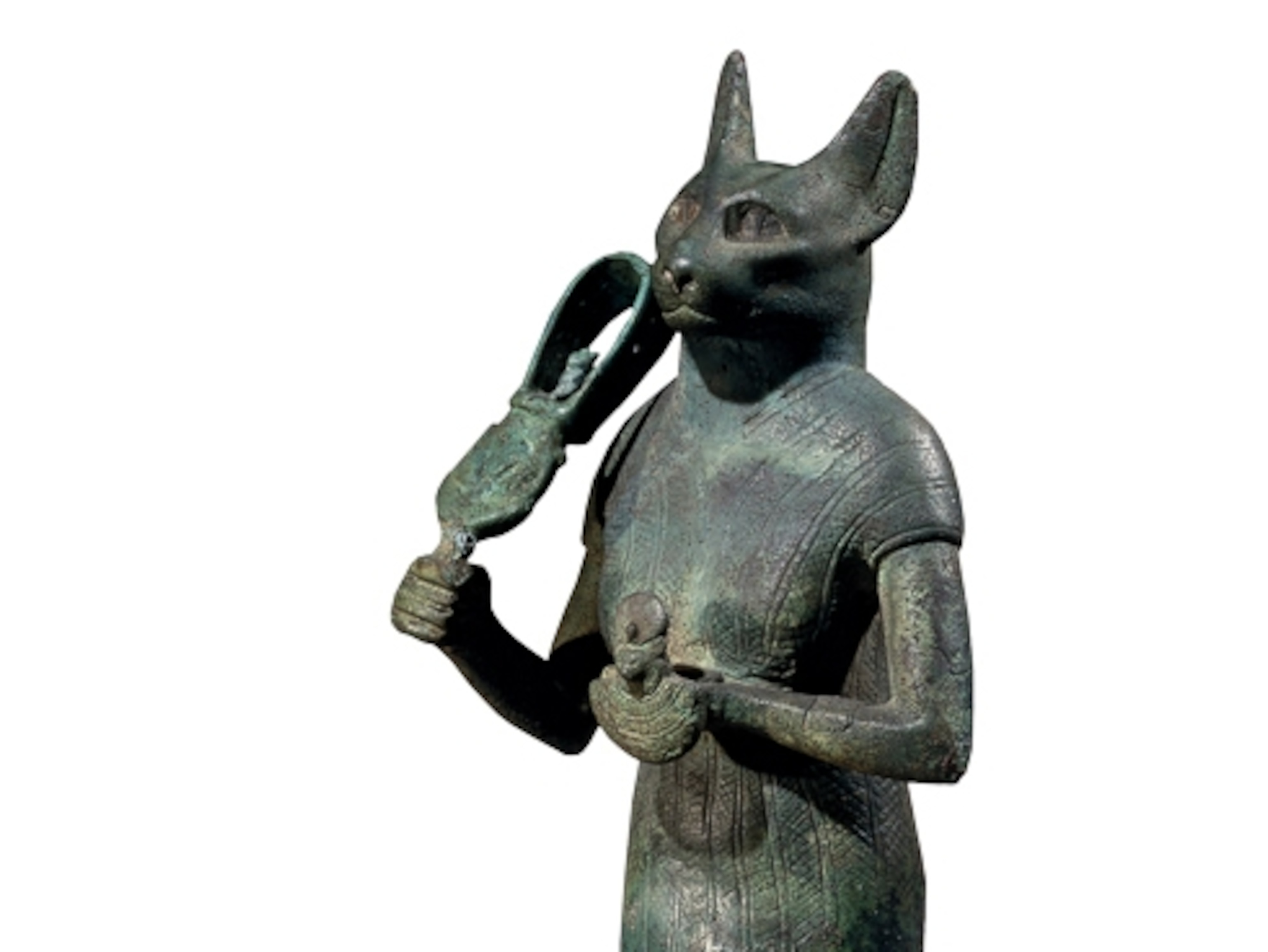See ancient Egypt's stunning, lifelike mummy portraits
Realism was a thing of the past in the funerary portraits discovered at Al Fayyum.
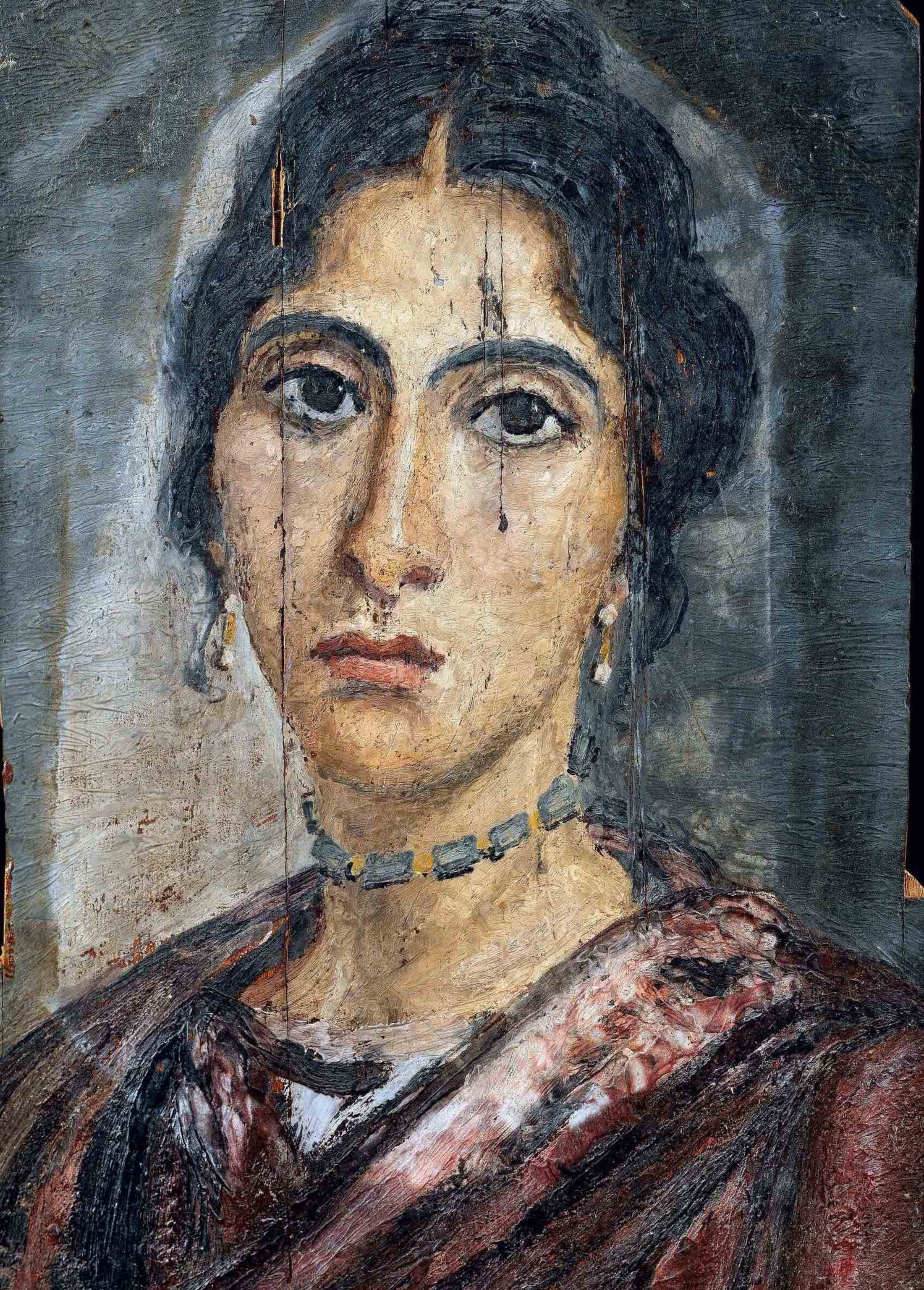
Dark, direct, soulful: The eyes of the Al Fayyum portraits stare out and invite viewers in to see the faces of Egyptians who lived thousands of years ago, when the Greek Ptolemy rule gave way to Rome. Created to adorn the dead, these funereal portraits reveal how Egyptian, Roman, and Greek practices began to blend, creating a hybrid culture of enduring fascination to archaeologists and museumgoers alike.
In 1887 British archaeologist Flinders Petrie started excavating at the pyramid at Hawara near Egypt’s Al Fayyum Oasis in the hopes of finding tombs from the third millennium B.C. To his disappointment, he uncovered a first-century B.C. Roman-era cemetery instead. Soon his chagrin turned to curiosity and then to mounting excitement: On a mummified body found in one of the brick tombs, his team found a portrait: “the beautifully drawn head of a girl, in soft grey tints, entirely classical in its style and mode.”
Portraits from Al Fayyum
Over the course of the dig at Al Fayyum, Petrie uncovered some 60 similar panels, whose realism moved him to describe them in his notes almost as they were living, breathing people: “A young, married woman of about 25,” he wrote of another find, “of a sweet but dignified expression, with beautiful features.”
Petrie was not the first Westerner to have come across the painted mummy panels of Egypt. In the early 17th century the Italian traveler Pietro della Valle saw lifelike mummy art when he passed through the necropolis of Saqqara just south of the modern-day city of Cairo.
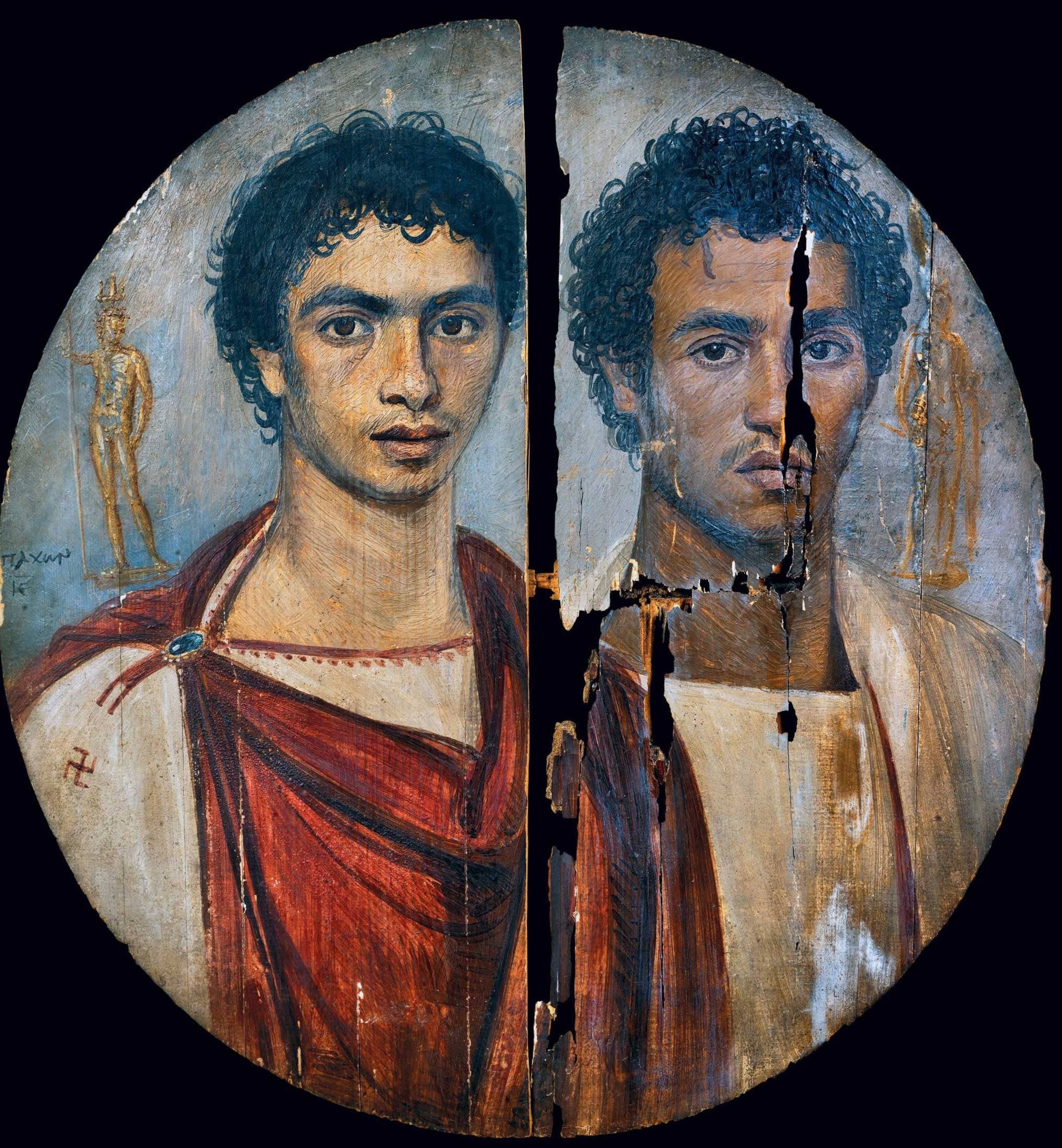
Petrie was, nevertheless, the first archaeologist to submit these portraits to academic study, beginning the task of piecing together a unique world in which Egyptian, Greek, and Roman styles and customs began to intertwine from the first century B.C. through to the fourth century A.D. The artistic style seen in the mummy portraits reflected this cultural intermingling and may have influenced later Christian art.
Flowering at the Oasis
The modern-day city of Al Fayyum is located about 60 miles southwest of Cairo, between the Western Desert and the Nile. Known as Shedet during pharaonic times, the city, the nearby oasis, and the surrounding area were transformed when Alexander the Great conquered Egypt in 332 B.C., incorporating Egypt into an empire that would grow to encompass what is now Greece, Turkey, the Palestinian territories, Israel, Syria, Iran, Iraq, and much of Central and South Asia.
Alexander’s successors, the Ptolemy kings, would rule Egypt for nearly three centuries. They were drawn to the fertile land around Al Fayyum. Irrigation systems of canals were built, and it turned into one of Egypt’s most productive agricultural regions producing abundant crops of fruits, vegetables, and vines.
As the region grew prosperous, people from many backgrounds were drawn to the oasis, leading to a multicultural population of Egyptians, Greeks, and Romans. Many of the Greeks, or Hellenes, had come with Alexander during his conquest.
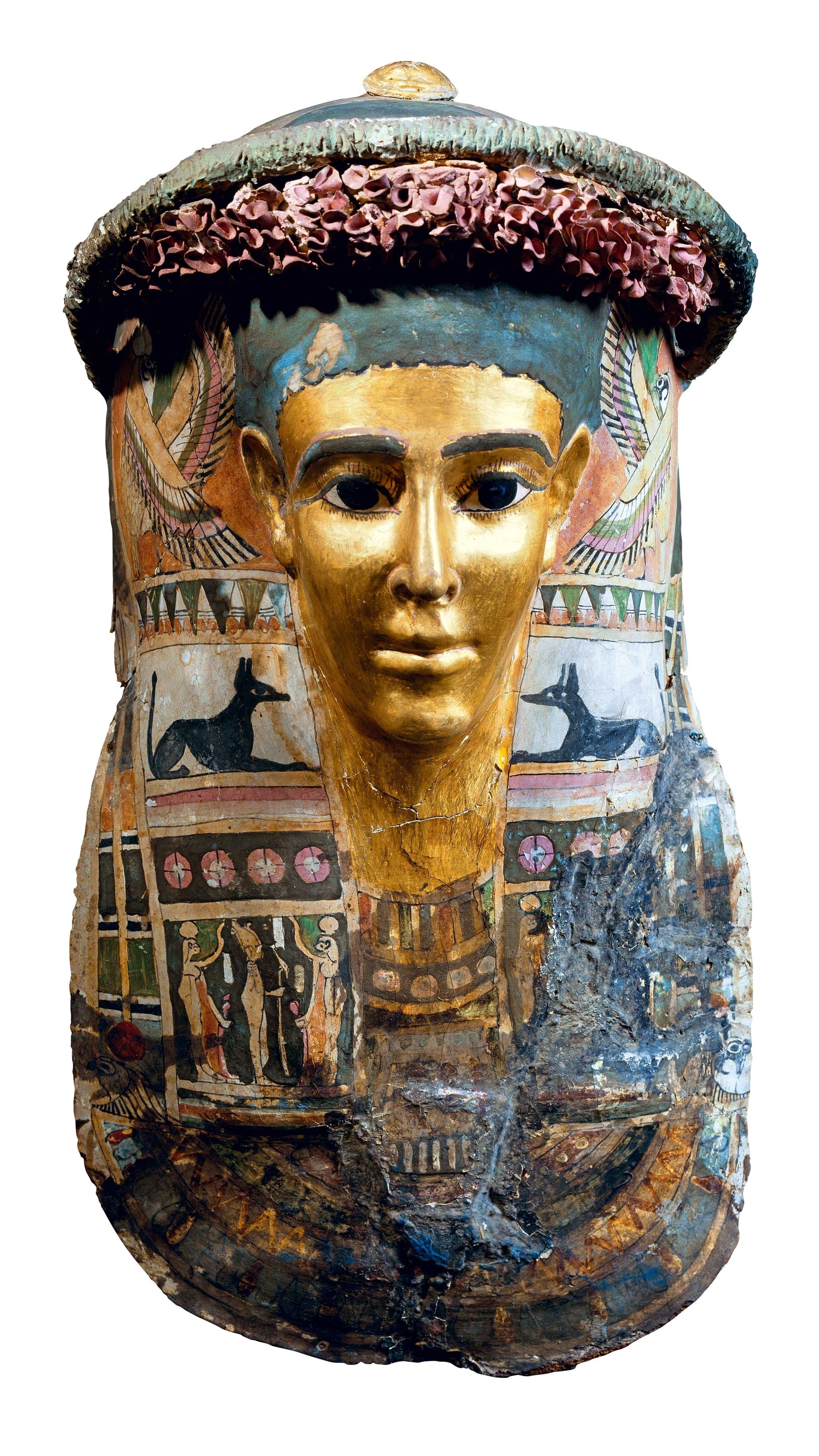
Many local Egyptians were peasants and artisans who migrated from other regions of the country. After 30 B.C. the Roman presence intensified under Octavian—soon to become Emperor Augustus—made Egypt a Roman province following the death of Cleopatra, the last of the Ptolemaic rulers and lover of Julius Caesar and Mark Antony.
Al Fayyum’s multiculturalism expressed itself in many ways: art, religion, and language. Archaeological evidence shows that the burgeoning population spoke and wrote in Greek and took Greek names—such as Antinoüs, Polion, Soter, and Irene—as well as names bearing Egyptian influence, such as Ammonius.
Culturally Greek families around Al Fayyum and other parts of northern Egypt seemed perfectly comfortable adopting Egyptian traditions and religious rituals. Many Greek speakers worshipped Osiris, god of the afterlife, and inclined toward Egyptian customs in funerary rites.
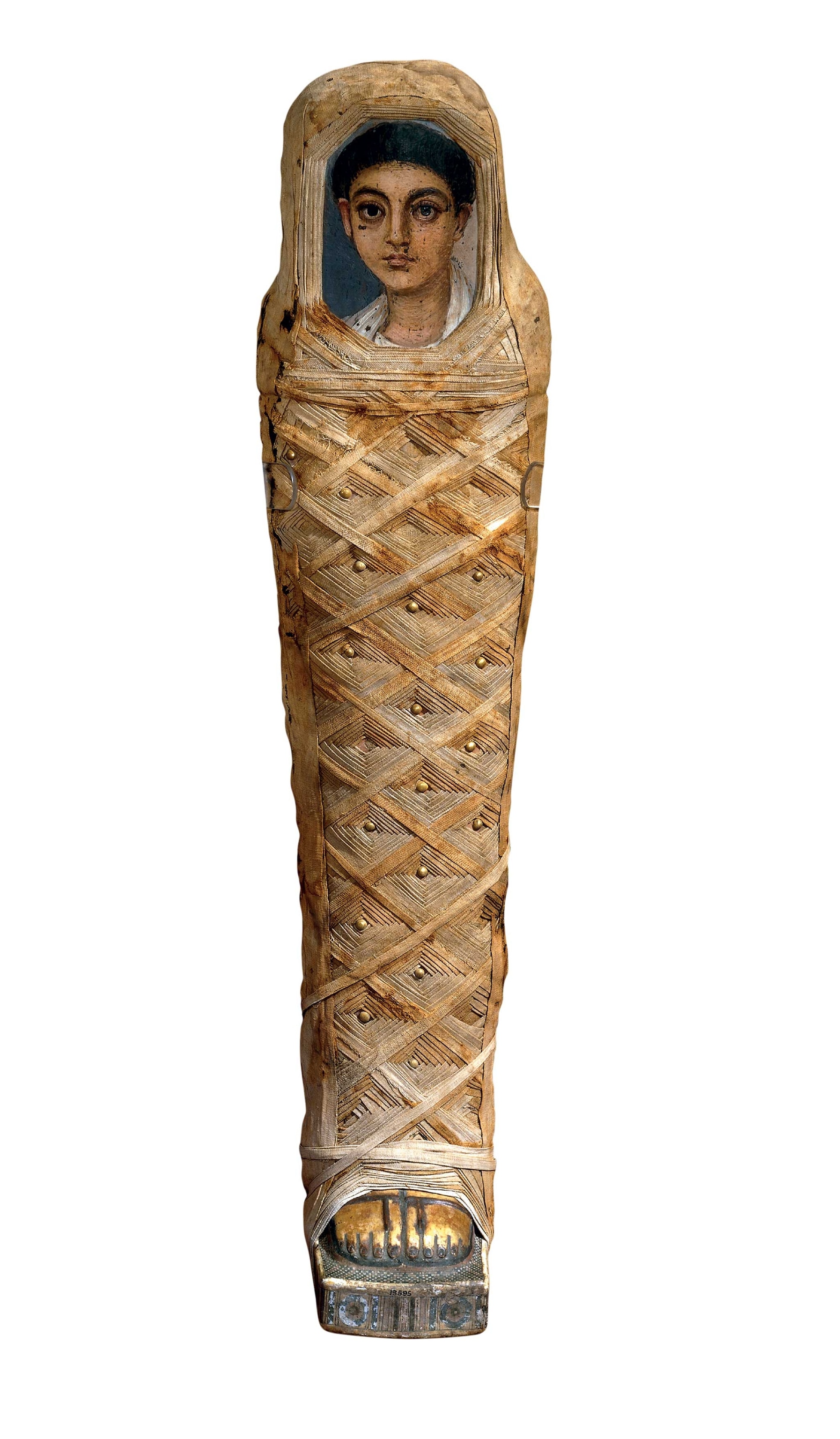
Although cremation and burial were common in the wider Greco-Roman world, many recent arrivals in Al Fayyum adopted Egyptian mummification rituals. Recent scholarship suggests the portraits were created to keep the essence of the deceased intact and encapsulate the moment of a person’s transition from life through death and on to the realm of Osiris.
Old Traditions, New Expressions
Elaborate mummification rituals for elite burials appeared very early in Egypt’s history, during the Old Kingdom, which ended around 2130 B.C. The practice started to spread to the wider population during the Middle Kingdom. Mummies from this time were found wearing funerary masks made from cloth stiffened with plaster. These masks, however, tended to be highly stylized and all looked similar in appearance.
In Al Fayyum at the end of the Ptolemaic era and the beginning of Roman rule, Greek and Roman influences become apparent on mummification portraits. Rather than the uniform appearance of the traditional masks, these portraits manifested the same realism present in Greek and Roman works of art. Subjects were depicted naturalistically, creating a vivid image of the deceased that celebrated their lives, virtues, and achievements.

There is a wide range of craftsmanship of mummy portraits from Al Fayyum. Specimens have been found with crude coloring and construction, suggesting that even poorer people were having their portraits done. Many of the faces of Al Fayyum largely belong to the wealthy or professional members of society. Some experts have suggested that these uncannily lifelike images were painted while the people still lived, and decorated their homes until needed to adorn the mummy.
Making Mummies, Making Art
In artistic style and technique the portraits follow the Greek style. Although surviving examples of Greek panel paintings from this era are rare, scholars know what they looked like from glowing literary descriptions. The discovery of the Al Fayyum mummy panels finally let historians see, firsthand, the great artistic skill of first-century B.C. artisans. Subjects are generally depicted in a three-quarter rather than frontal view. Shadows and highlights are employed to reveal contours and curves of facial features.
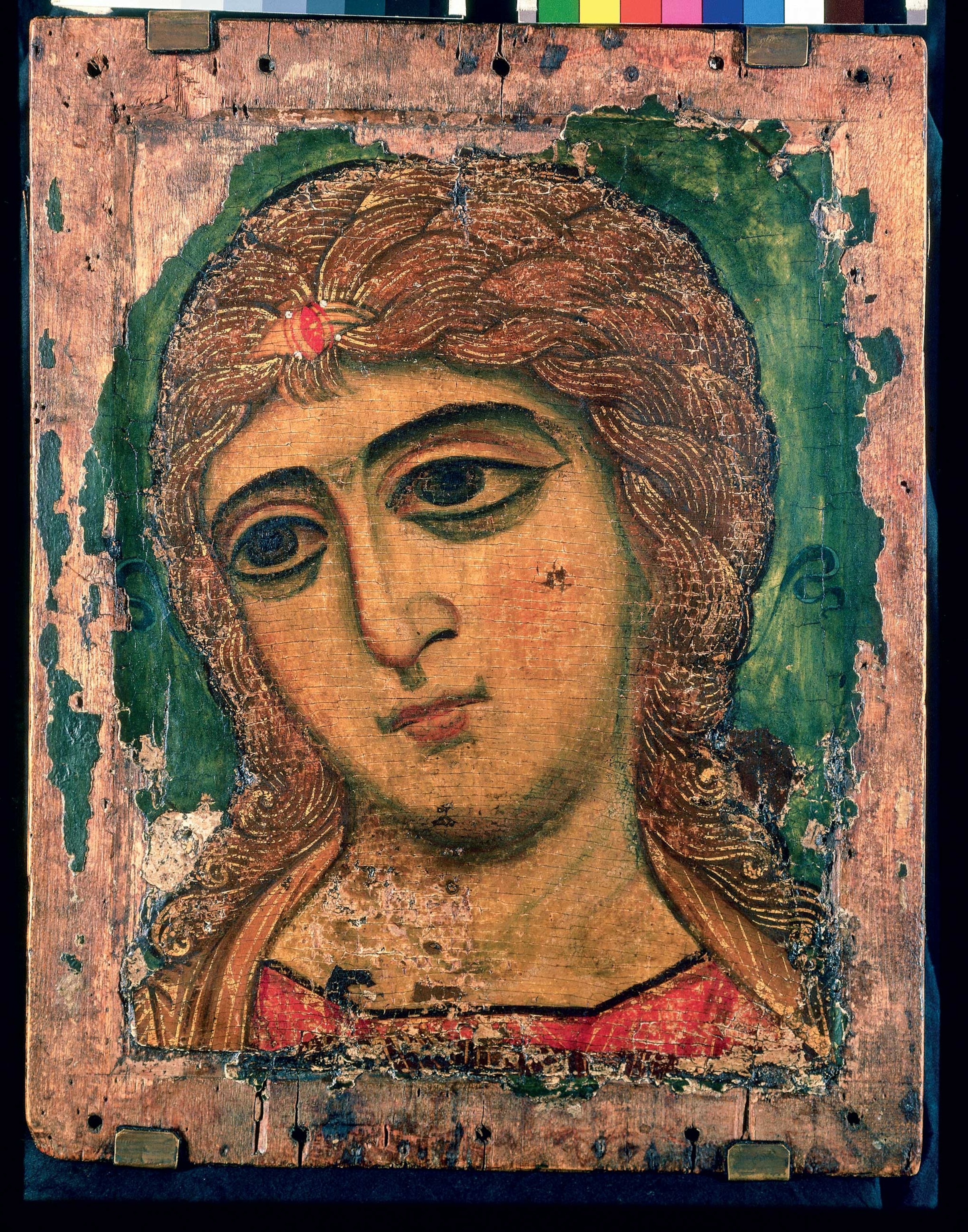
Although the images seem highly customized, this impression can be deceptive. Art historians have noticed that many of the paintings are, in fact, schematic drawings onto which individualized traits would be mapped. Close examination of various portraits reveal that there is a basic structure: an oval shape for the face, the position of mouths and noses, and even the poses are often identical from one to another. It is the eyebrows, eyes, hair, and accessories that distinguish the subjects from one another.
Identifying the person in the painting has been challenging. A few portraits have Greek inscriptions indicating the name and profession of the deceased on the image itself, such as “Hermione, the Schoolteacher,” but most do not. Visual clues can lend insight to the identity of the deceased. Soldiers and athletes are usually depicted wearing a sash and bare shoulders, respectively. Women are portrayed flaunting splendid jewelry, clothes, and elaborate hairstyles, and children often appear wearing gold necklaces with amulets, a common Roman symbol for childhood.
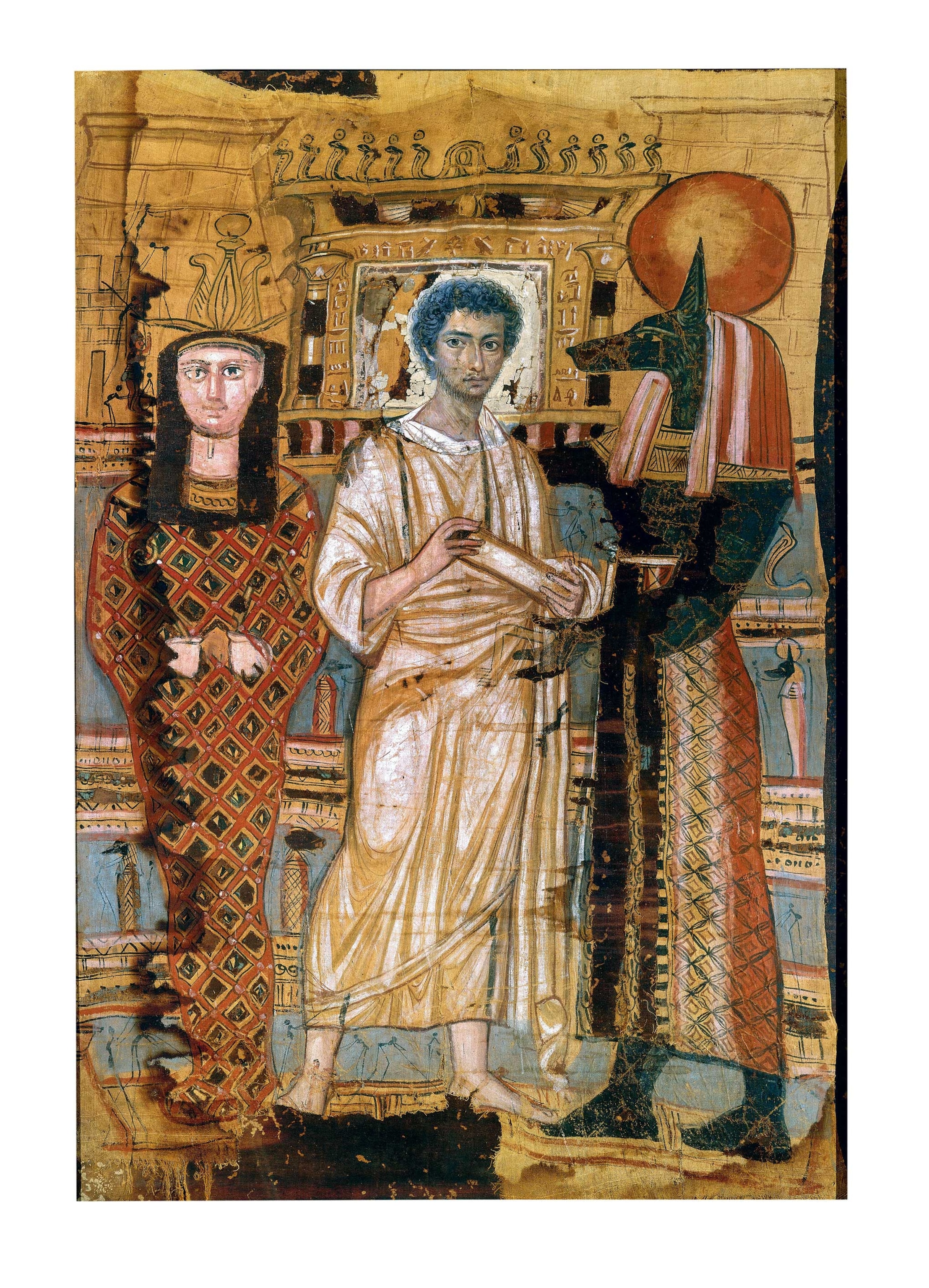
Stylistic and cultural diversity can also be observed in subtle details concerning the symbolism of the paintings. For instance, the subject of one of the portraits wears a seven-pointed star, a designation of the Greco-Egyptian god Serapis, while others wear crowns of golden leaves, a symbol attributed to Macedon, Greek, and Roman royalty. Aside from their striking appearance, these funereal portraits give scholars great insight into the diverse population of the Al Fayyum region and how different cultures influenced each other. Typically, portraits show their subjects looking their best, so the clothing, hairstyles, and accessories reflect the fashion of the time. They show people dressed not in the Egyptian manner but in the Roman style, showing the influence of the imperial court.
Mummy portrait panels were typically painted on wood, although some were painted on stiffened linen. Many artists created their paint by mixing beeswax with pigment and making applications in multiple layers, a technique known as encaustic. The term is from the Greek for “burnt in,” but no burning is necessary for creating the paints or the portraits. This method likely originated in the Greek world and may have been introduced to Egypt at the time of Alexander’s conquests. The layering of different colors helps achieve a distinctive range of subtle hues to give the image intensity and depth.
Encaustic portraits are easy to spot due to their glossy finish. Some artists employed tempera paint, a mixture of pigment, egg, and water, for portraits. Unlike the reflective surface of the encaustic works, finished tempera portraits often have a flat, matte finish. Another important detail in some of the more costly portraits is the application of gold leaf, which gives the crowns and the jewelry their richness and glow.
Looking Forward, Looking Back
At the end of the fourth century A.D. Emperor Theodosius I ordered the suppression of mummification in a bid to strengthen Christian orthodoxy across the empire. Despite the disappearance of a ritual that had been part of Egyptian culture for millennia, the mummy portraits would themselves enjoy a kind of afterlife.
Echoes of the Al Fayyum panels can be seen in later artworks of the Byzantine period and medieval Europe, as well as in early Christian art. Their individuality, large eyes, and use of gold leaf would live on in Byzantine icons, and in the art of medieval and Renaissance Europe centuries later. Nearly 1,000 of these portraits are held in museum collections worldwide—from Egypt to London to Los Angeles—allowing modern people to gaze into the eyes of the past.
Eva Subías Pascual is associate professor of archaeology at the Rovira i Virgili University, Spain.
